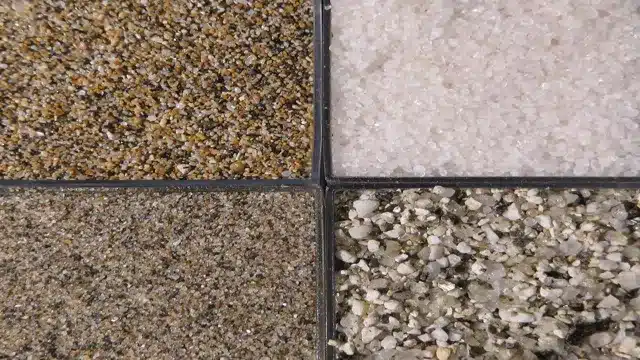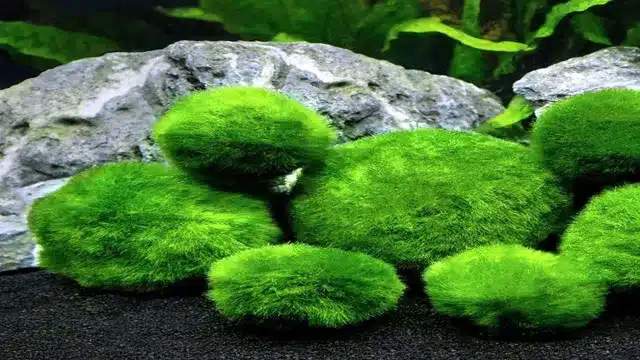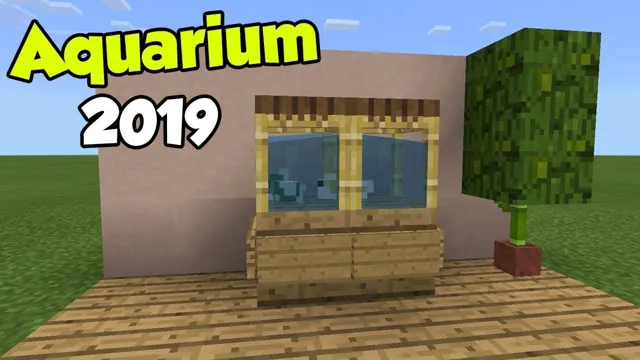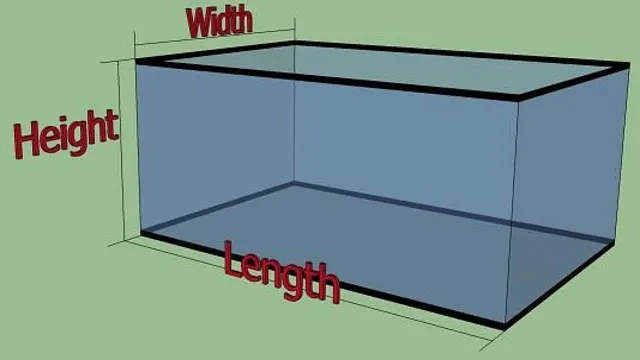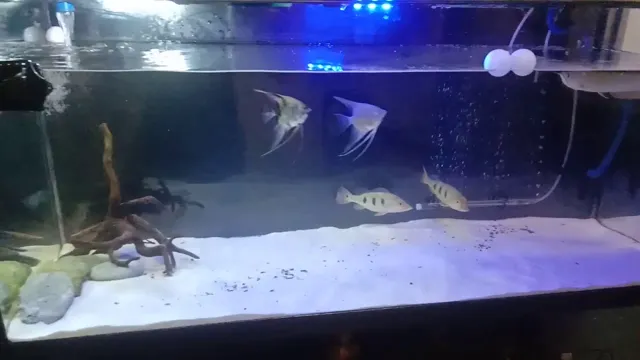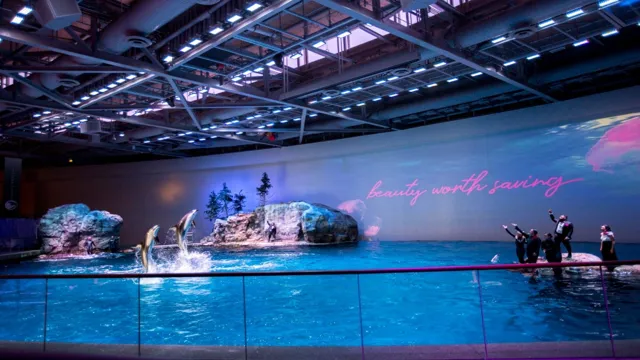What’s the difference between aquarium sand and play sand? If you’re new to the world of fishkeeping, you may have asked yourself this question. Both options have their benefits, but ultimately, the choice will depend on your specific needs and preferences. Play sand, as the name suggests, is designed for use in children’s sandboxes.
It’s made from crushed quartz or silica and is washed and graded to remove any impurities. Aquarium sand, on the other hand, is specially formulated for use in fish tanks. It’s made from natural materials such as crushed coral, aragonite, or sandstone and is designed to mimic the natural environment of your aquarium inhabitants.
While play sand may be cheaper than aquarium sand, it may contain harmful substances such as clay or dirt that could pollute your aquarium water. Aquarium sand, on the other hand, is pH-neutral and won’t affect the water chemistry in your tank. Another factor to consider is the size of the sand grains.
Play sand is often coarser than aquarium sand, which could be problematic for certain fish species that like to burrow. Additionally, play sand may have sharp edges that could harm your fish. Aquarium sand, on the other hand, is typically smoother and safer for your aquatic pets.
In conclusion, while play sand may seem like an economical choice, aquarium sand is the better option for a healthy and thriving fish tank. With its natural composition, pH-neutrality, and smooth texture, aquarium sand is a safer and more reliable choice for your precious fish.
Composition
If you’re planning on setting up an aquarium, you might be wondering: what is the difference between play sand and aquarium sand? The answer mainly lies in their composition. Play sand is typically made from ground quartz, which may contain impurities that are harmful to aquatic life. On the other hand, aquarium sand is specially formulated to be safe for fish and plants.
Aquarium sand may be made from materials such as aragonite or crushed coral, which not only provide a natural look but also help to maintain a stable pH level in the tank. Additionally, aquarium sand is usually finer and softer than play sand, which can help prevent injury to fish that like to burrow or forage in the substrate. Overall, choosing the right sand for your aquarium is crucial for the health and well-being of your aquatic pets.
So, it’s best to stick to sand that is specifically designed for aquarium use to ensure that your fish and plants thrive.
Play Sand
When it comes to play sand, it’s essential to know its composition to ensure that it’s safe for children to play with. Generally, most play sands contain a mixture of silica, quartz, and other natural ingredients. Silica is a common material used in making glass or pottery, while quartz is a mineral that is often found in sandstones.
Play sand is specially designed to be soft, which makes it perfect for children to mold and shape without causing skin irritation. However, not all play sands are created equal, as some may contain harmful substances like asbestos or non-crystalline silica. It is important to carefully read the label and check that the sand has been thoroughly washed and dried to prevent any health risks to children.
When it comes to play sand, always prioritize the safety of your children, and don’t hesitate to ask for clarification on the product’s composition before purchasing. (See Also: How to Filter Tap Water for My Aquarium: A Comprehensive Guide)

Aquarium Sand
When it comes to setting up a beautiful and healthy aquarium, choosing the right kind of substrate is crucial. One common type of substrate used in aquariums is sand. Aquarium sand is typically made up of small, smooth particles that are ideal for bottom-dwelling fish and invertebrates.
Most aquarium sand is made up of silica, which is naturally found in the environment and is known for its ability to hold onto nutrients and microorganisms that are important for maintaining a healthy aquarium ecosystem. Some other types of sand, such as aragonite, may also be used to adjust pH levels and provide additional benefits for certain types of fish and corals. Before choosing an aquarium sand, it’s important to do some research and determine which type will be best suited for your specific aquarium’s needs.
Cleanliness and Safety
If you’re wondering about the difference between play sand and aquarium sand, there are a few key factors to consider. First and foremost, play sand is not safe for aquariums. It is not designed to be sterile or free from contaminants, which can harm your aquatic pets.
Aquarium sand, on the other hand, is specially created to be clean and safe for aquatic environments. It is typically made from natural materials, such as crushed coral or aragonite, and is sterilized to ensure that it is free from harmful bacteria and chemicals. So, while play sand may be suitable for sandbox playtime, it is not a good choice for your fish tank.
Always opt for aquarium sand when setting up a safe and healthy environment for your aquatic pets to thrive in.
Play Sand
When it comes to kids’ play sand, cleanliness and safety should be top priorities. It’s important to choose play sand that is specifically labeled as “safe for children” and is free of any toxic substances. Always check the label and look for play sand that is made from natural materials, such as quartz or silica, and has been washed and filtered to remove any debris.
Additionally, be sure to keep the play area clean and tidy by regularly sweeping up any sand that has been tracked out of the play area or may have become contaminated. Think of it like vacuuming your home – keeping the play area clean helps to prevent the spread of germs and dirty particles. By taking these precautions, you can ensure that your kids are playing safely and happily in their sandboxes.
Aquarium Sand
Aquarium sand is an essential component in any fish tank setup, but it’s essential to ensure its cleanliness and safety. When choosing sand for your aquarium, it’s vital to select sand that’s free from harmful chemicals and toxins. Cleanliness is also paramount, as dirty sand can lead to unhealthy water conditions for your fish.
One way to ensure the safety and cleanliness of your aquarium sand is to clean it thoroughly before adding it to your tank. You can do this by washing it multiple times with clean water until the water runs clear. Using a sieve can also help remove any impurities.
It’s also crucial to maintain proper hygiene when handling the sand to avoid contaminating it with bacteria or other harmful substances. By following these steps and regularly monitoring the water parameters in your tank, you can ensure a healthy and safe living environment for your fish. (See Also: How to Clean Calcium Deposits off Aquarium: A Step-by-Step Guide for Sparkling Clean Tanks)
Intended Use
When it comes to sand, not all are created equal. The intended use really does matter. Play sand, for instance, is designed for children to play with.
It’s often made with silica, but it may not be suitable for aquarium use. If you’re looking for a sand substrate for your aquarium, then aquarium sand is the way to go. It’s designed for aquatic environments and is made with safe and clean materials that won’t adversely affect your fish or plants.
Aquarium sand is often made with minerals that promote plant growth and provides a natural look for your tank. When choosing between play sand and aquarium sand, it’s important to keep in mind that they are intended for different uses. If you want to make sure that your fish and plants thrive in your aquarium, then aquarium sand is the way to go.
Play Sand
Play sand is a type of sand that is designed to be used for children’s play and exploration activities. It is a soft and fine-grained sand that is perfect for creating sandcastles, digging holes, and building other structures. The main purpose of play sand is to provide a safe and fun play environment for children.
Unlike regular sand found on beaches or in construction sites, play sand is free from contaminants and toxic materials that could harm children’s health. It is also specially formulated to be dust-free, making it safe for children to breathe and preventing allergies and respiratory problems. Play sand is an excellent choice for parents or caregivers who want to provide children with engaging and stimulating play opportunities while ensuring their safety and well-being.
So, if you’re looking for a fun and safe way for children to enjoy hours of imaginative play, play sand is an excellent choice!
Aquarium Sand
Aquarium sand is a specially formulated substrate designed for fish tanks, providing a natural and aesthetically pleasing environment for your underwater pets. This sand is made from materials that are safe for fish and aquatic plants, and it comes in a variety of colors and grain sizes that allow for customization of the look and feel of your tank. Aquarium sand can also provide a great anchor for live plants, helping them root and grow within the substrate.
With its excellent drainage and water filtration properties, this sand helps to keep the tank clean, clear, and healthy for your fish. Furthermore, aquarium sand can also play a vital role in maintaining the pH level in the tank, which is critical for the well-being of your fish and other aquatic species. Overall, aquarium sand is a great investment for both new and experienced fish keepers who want to create a beautiful and healthy environment for their aquatic pets.
Conclusion
In conclusion, the difference between play sand and aquarium sand is like the difference between a bag of chips and a gourmet meal. Play sand may seem tempting with its lower price and abundance, but it lacks the necessary specifications for aquatic life to thrive. Aquarium sand, on the other hand, is carefully chosen to provide a safe and healthy habitat for our aquatic friends.
So the next time you’re tempted to use play sand in your aquarium, just remember – you wouldn’t want to eat chips for every meal, and your fish wouldn’t want to swim in low-quality sand. Invest in quality aquarium sand for a healthy and happy aquatic environment. (See Also: How to Remineralize RO Water for Freshwater Aquarium: A Comprehensive Guide)
FAQs
Can I use play sand in my aquarium?
While it may seem like a cost-effective option, play sand is not suitable for aquariums as it can contain harmful chemicals and substances that can harm your fish and plants.
What is the difference between play sand and aquarium sand?
Aquarium sand is specifically designed and treated to be used in aquariums, whereas play sand is not. Aquarium sand is also finer and more uniform in texture.
Can I mix play sand and aquarium sand together?
It is not recommended to mix play sand and aquarium sand as it can create an uneven substrate layer and lead to poor water quality.
How often should I replace aquarium sand?
Aquarium sand does not need to be replaced frequently unless it is heavily soiled or damaged. However, some aquarists prefer to replace it every few years to maintain a clean and healthy environment.
Can I reuse old aquarium sand?
Yes, you can reuse old aquarium sand as long as it is thoroughly cleaned and disinfected before being added back to the aquarium.
Why is substrate important in aquariums?
Substrate, such as sand and gravel, provides a surface area for beneficial bacteria to grow and establish a healthy biological filtration system in the aquarium.
How do I clean aquarium sand?
Aquarium sand can be cleaned by using a gravel vacuum or siphon to remove excess debris and waste. It is also recommended to stir the sand occasionally to prevent anaerobic pockets from forming.

